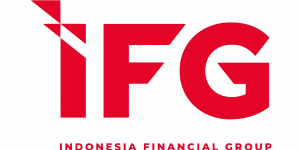United States
The US economy in July 2025 showed diverging momentum as manufacturing slipped into contraction (PMI 49.8) and industrial production weakened across both durable and nondurable goods, while services expanded strongly (PMI 55.7; Composite 55.1), making services becomes key driver of growth. Inflation eased slightly to 2.7% YoY, close to the Fed’s target, though housing and healthcare costs kept core pressures sticky, while goods categories like apparel and transport remained subdued. The labor market showed early signs of loosening as unemployment rose to 4.3% from 4.0%, reflecting weaker full-time hiring even as part-time and female joblessness held steady. Meanwhile, the trade deficit widened to USD -84.5 billion as imports climbed faster than exports, underscoring solid domestic demand but rising external imbalances. On the policy front, the Trump administration reinforced its protection stance by introducing a 10% baseline tariff on imports, imposing a 40% penalty on goods rerouted through other countries to avoid duties, suspending de minimis exemptions for low value shipments, and tightening controls on imports from China. Nevertheless, additional tariff increases are still under consideration.
Euro Area
The Euro Area economy in mid-2025 showed a fragile but slightly improving outlook. Consumer confidence in July improved modestly, with the Euro Area balance at -10.0 versus -11.8 in June, as Germany neared neutral sentiment, though France, Italy, and peripheral economies like Greece and Turkey remained deeply negative. Retail sales in June rose 3.1% YoY and 0.3% MoM, the fastest pace since September 2024, driven by non-food products and automotive fuel, signaling stronger demand beyond essentials. Inflation remained uneven: Germany (1.0%) and France (0.2%) were subdued, while Austria (3.6%), Croatia (4.1%), and Romania (7.8%) highlighted regional pressures. GDP growth in Q2 2025 was modest at 0.2% YoY, supported by consumption and investment, with small contribution of trade. In August, the ECB kept rates unchanged at 2.00–2.40%, marking its second pause after a year-long easing cycle, stressing a data-dependent stance while markets saw this as the likely end of rate cuts barring significant downside risks.
China
China’s economy in mid-2025 showed mixed momentum. In July 2025, the Manufacturing PMI slipped to 49.5 while Services PMI rose to 52.6, keeping the Composite at 50.2. Industrial output was uneven, with steel and cement falling but autos, power generation, and electronics gaining. Unemployment edged up to 5.2%, CPI fell -0.5% YoY back into deflation while core CPI rose 0.4%, and retail sales slowed to 3.7% YoY, supported mainly by cars and electronics. Trade stayed resilient with exports up 7.2% and imports 4.1%, driven by emerging markets, while shipments to North America fell on US tariffs. Q2 GDP growth was led by services (+5.6% YoY) and high-tech, offsetting weak manufacturing and a 0.9% real estate contraction, underscoring China’s reliance on services amid structural headwinds.
Indonesia
Indonesia’s economy remained resilient in mid-2025, with GDP growth accelerating to 5.12% YoY in Q2 from 4.87% in Q1, supported by solid household consumption (+4.97% YoY), stronger investment (+6.99%), and robust services momentum, while manufacturing (+5.68%) and trade (+5.37%) added to sectoral expansion. Exports rose +10.67% YoY and imports +11.65%, reflecting firm domestic activity despite limiting net trade gains. Inflation picked up modestly to 2.37% YoY in July, driven mainly by food and tobacco, while core categories such as housing, health, and education stayed stable. Retail activity eased slightly, with the index falling to 222,550 in July from 231,895 in June as essentials like food and fuel softened, though discretionary spending on leisure and apparel remained resilient.
Externally, the trade surplus narrowed slightly to USD 4.10 billion in June from USD 4.30 billion in May but remained well above 2024 levels, reflecting strong goods exports and firm services activity. Foreign reserves stood at USD 135.0 billion in July, covering six months of imports, while commercial bank FX liquidity also improved. Bank Indonesia cut the policy rate by 25 bps to 5.00% in August, its fourth cut since late 2024, to support growth amid stable inflation and a stronger Rupiah. Government external debt climbed 10.0% YoY to USD 210.1 billion on continued foreign inflows into SBN, while private debt contracted -0.7% YoY, reflecting cautious corporate borrowing. Together, these trends highlight Indonesia’s steady growth path, underpinned by robust consumption, investment, and external buffers, though import strength, cautious household demand, and global uncertainty remain key risks.


